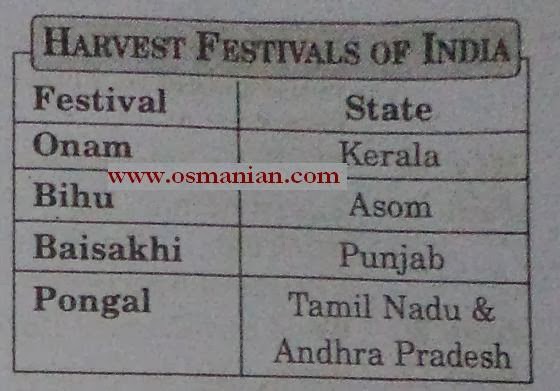17. The Constitution (Seventeenth Amendment) Act, 1964—Article 31A was further amended to prohibit the acquisition of land under personal cultivation unless the market value of the land is paid as compensation and the definition of “estate” as contained in that Article had also been enlarged with retrospective effect. The Ninth Schedule had also been amended to include 44 more Acts.
18. The Constitution (Eighteenth Amendment) Act, 1966—Article 3 was amended by this Act to specify that the expression “State” will include a union territory also and to make it clear that the power to form a new state under this Article includes a power to form a new state or union territory by uniting a part of a state or a union territory to another state or union territory.
19. The Constitution (Nineteenth Amendment) Act, 1966—Article 324 was amended to effect a consequential change as a result of the decision to abolish Election Tribunals and to hear election petitions by High Courts.
20. The Constitution (Twentieth Amendment) Act, 1966—This amendment was necessitated by the decision of the Supreme Courts in Chandramohan vs. State of Uttar Pradesh in which certain appointments of District Judges in State of Uttar Pradesh were declared void by Supreme Court. A new Article 233A was added and the appointments made by Governor were validated.
21. The Constitution (Twenty-first Amendment) Act, 1967—By this amendment, Sindhi Language was included in the Eighth Schedule.
22. The Constitution (Twenty-second Amendment) Act, 1969—This act was enacted to facilitate the formation of a new autonomous state of Meghalaya within state of Assam.
23. The Constitution (Twenty-third Amendment) Act, 1969—Article 334 was amended so as to extend the safeguards in respect of reservation of seats in Parliament and State Legislatures for Schedules Castes and Scheduled Tribes as well as for Anglo-Indians for a further period of ten years.
24. The Constitution (Twenty-fourth Amendment) Act, 1971—This amendment was passed in the context of a situation that emerged with the verdict in Golaknath’s case by Supreme Court. Accordingly, this Act amended Article 13 and Article 368 to remove all doubts regarding the power of Parliament to amend the Constitution including the Fundamental Rights.
25. The Constitution (Twenty-fifth Amendment) Act, 1971—This amendment further amended Article 31 in the wake of the Bank Nationalisation case. The word ‘amount’ was substituted in place of ‘compensation’ in the light of the judicial interpretation of the word ‘compensation’ meaning ‘adequate compensation’.
26. The Constitution (Twenty-sixth Amendment) Act, 1971—By this amendment, the privy and privileges of the former rulers of Indian states were abolished. This amendment was passed as a result of Supreme Court decision in Madhav Rao’s case.
27. The Constitution (Twenty-seventh Amendment) Act, 1971—This amendment was passed to provide for certain matters necessitated by the reorganisation of north-eastern states. A new Article 239B was inserted which enabled the promulgation of Ordinances by Administrators of certain union territories.
28. The Constitution (Twenty-eighth Amendment) Act, 1972—The amendment was enacted to abolish the special privileges of the members of Indian Civil Services in matters of leave, pension and rights as regard to disciplinary matters.
29. The Constitution (Twenty-ninth Amendment) Act, 1972—The Ninth Schedule to the Constitution was amended to include therein two Kerala Acts on land reforms.
30. The Constitution (Thirtieth Amendment) Act, 1972—The purpose of the amendment was to amend Article 133 in order to do away with the valuation test of Rs 20,000 as fixed therein, and toprovide instead for an appeal to Supreme Court in Civil proceedings only on a certificate issued by High Court that the case involves a substantial question of law of general importance and that in opinion of High Court, the question needs to be decided by Supreme Court.
31. The Constitution (Thirty-first Amendment) Act, 1973—This Act inter alia raises the upper limit for the representation of states in the Lok Sabha from 500 to 525 and reducing the upper limit for the representation of union territories from 25 members to 20.
32. The Constitution (Thirty-second Amendment) Act, 1973—This Act provided the necessary constitutional authority for giving effect to the provision of equal opportunities to different areas of the State of Andhra Pradesh and for the constitution of an Administrative Tribunal with jurisdiction to deal with grievances relating to public services. It also empowered Parliament to legislate for the establishment of a Central University in the State.
.
33 The Constitution (Thirty-third Amendment) Act, 1974—By this amendment, Articles 101 and 190 were amended in order to streamline the procedure for resignation of Members of Parliament and State Legislatures.
34. The Constitution (Thirty-fourth Amendment) Act, 1974—By this Act, twenty more land tenure and land reforms laws enacted by various State Legislatures were included in the Ninth Schedule.
35. The Constitution (Thirty-fifth Amendment) Act, 1974—By this Act a new Article 2A was added thereby conferring on Sikkim the status of an associate State of Indian Union. Consequent amendments were made to Articles 80 and 81. A new schedule, i.e., Tenth Schedule, was added laying down terms and conditions of association of Sikkim with the Union.
36. The Constitution (Thirty-sixth Amendment) Act, 1975—This was enacted to make Sikkim a full-fledged State of Indian Union and to include it in the First Schedule to the Constitution and to allot to Sikkim one seat each in the Council of States and in the House of the People. Article 2A and the Tenth Schedule inserted by the Constitution (Thirty-fifth Amendment) Act were omitted and Articles 80 and 81 were suitably amended.



.JPG)
.JPG)
.JPG)
.JPG)
.JPG)
.JPG)
.JPG)


.JPG)
.JPG)
.JPG)
.JPG)